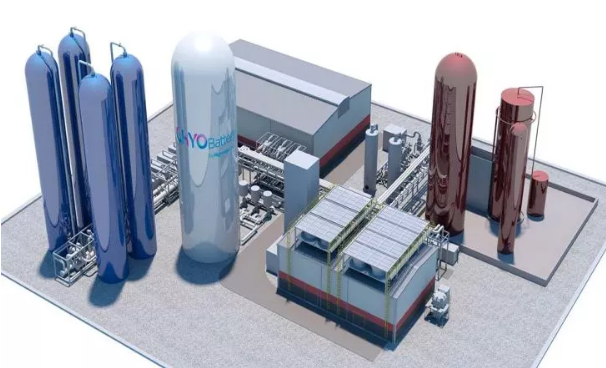The feasibility of utility scale liquid air energy storage systems in China is being investigated through a partnership between Japanese industrial giant Sumitomo’s energy tech subsidiary Sumitomo SHI FW and the Shanghai Power Equipment Research Institute, a subsidiary of the State Power Investment Corporation (SPIC).
The partnership will study the use of liquid air storage CRYOBatteries, developed by U.K.-based Highview Power, in four and eight-hour storage configurations to determine an optimal solution for the institute’s Binhai Power Station Energy Storage Demo project, in the Binhai county of Jiangsu, China. Both systems will have a capacity of 50MW.
pv magazine print edition
Highview Power's technology has already been deployed at scale, starting with its 5MW/15MWh Pilsworth plant in the U.K., described as the world’s first grid-connected liquid air energy storage system. Highview has also launched other projects including the development of up to seven CRYOBatteries, ranging in scale from 50MW/300MWh upwards, across Spain, in a development announced last year.
The technology uses energy to compress and cool air to minus 196 degrees Celsius until it liquefies and around 700 liters of ambient air becomes one liter of liquid. Stored in insulated tanks at low pressure, the liquid air is then reheated, creating a high-pressure gas that is used to drive turbines and generate electricity. Waste cold and heat from the process is stored separately.
Potential
Last year, a British-Australian research team assessed the potential of liquid air energy storage for large scale application and found such systems could be built for €300-600/kWh and offer a 20-year return on investment. Those figures, the researchers found, could be significantly reduced by co-locating liquid air storage facilities with industrial consumers who would pay for excess heat generated by the process. Highview's projects were defined as bankable by the research team, although the academics stressed those positive business cases are favored by certain conditions, including a determined price structure in the energy market and the presence of a grid unable to support high levels of renewable energy penetration.
Highview’s CRYOBatteries have been touted as adaptable and able to provide services at all levels of the electricity system. They can reportedly support power generation by firming renewables and provide energy arbitrage and peak shaving, among other grid services. They can also provide grid stabilization services such as inertia, voltage support and reactive power, as well as acting as a source of backup power for end users, it has been claimed.
The technology was conceived for utility scale applications with outputs ranging from 5-100MW. Liquid air energy storage offers high energy density and ease of deployment, compared to incumbent storage tech. Versus pumped-hydro storage, which harnesses the power of water in a similar way, liquid air systems offer much greater flexibility as they do not have to be tied to bodies of water. Proponents of liquid air storage facilities say they can be developed from an already established industry and without expensive or rare materials plus, they suffer from no degradation issues and offer a lifespan exceeding 30 years.
However, the cycle efficiency of liquid air energy storage – for charging and discharging – is relatively low, at around 60%. That could be improved, however, through integration and co-location with other processes such as liquefied natural gas terminals, as suggested in the previously mentioned research.
Accelerating China's energy transition
In 2020, Sumitomo announced a $46 million investment in London-based Highview Power, in a vote of confidence for the novel storage technology. “It is the only long-duration energy storage solution available today that offers multiple gigawatt-hours of storage, is scalable with no size limitations or geographic constraints, and produces zero emissions,” Sumitomo SHI FW said at the time.
In its announcement this week, the Japanese-owned, Finland-headquartered Sumitomo business unit said the liquid air storage system planned in China would “shift energy, reduce curtailment, and maintain system flexibility to allow [the] integration and growth of renewable[s] generation.” In addition, it will provide services to improve and maintain grid stability. The project is seen as particularly important in regard to China's plan, announced last year, to deploy 30GW of grid scale energy storage capacity and aim for renewables to account for more than half of total installed generation capacity by 2025.
According to the Shanghai Power Equipment Research Institute, the liquid air energy storage demonstration study “is the cornerstone of China’s energy transition plan to be carbon neutral by 2060.” The institute – a subsidiary of China’s largest energy company, state-owned SPIC – has been designated as the development center for energy storage technologies to help China’s decarbonization effort. SPIC is one of China’s five national generation groups and boasts installed power generation capacity of 190GW, of which 74GW is solar and wind power, according to Sumitomo's announcement. The state power company is also described as the largest PV asset owner in the world.
This content is protected by copyright and may not be reused. If you want to cooperate with us and would like to reuse some of our content, please contact: editors@pv-magazine.com.




Thank You for Sharing this information Article
Interesting site. Keep sending information.